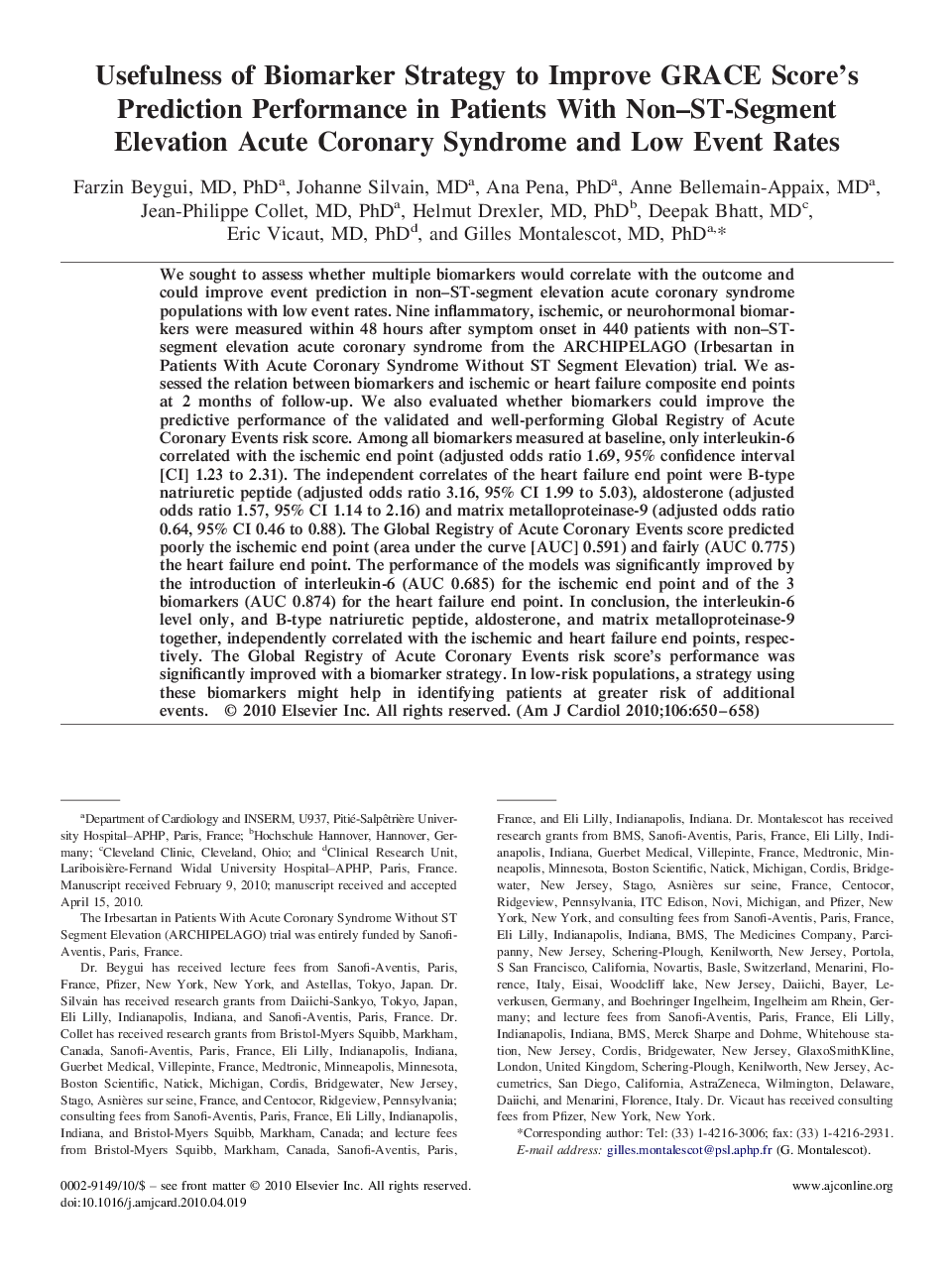| کد مقاله | کد نشریه | سال انتشار | مقاله انگلیسی | نسخه تمام متن |
|---|---|---|---|---|
| 2857132 | 1572265 | 2010 | 9 صفحه PDF | دانلود رایگان |

We sought to assess whether multiple biomarkers would correlate with the outcome and could improve event prediction in non–ST-segment elevation acute coronary syndrome populations with low event rates. Nine inflammatory, ischemic, or neurohormonal biomarkers were measured within 48 hours after symptom onset in 440 patients with non–ST-segment elevation acute coronary syndrome from the ARCHIPELAGO (Irbesartan in Patients With Acute Coronary Syndrome Without ST Segment Elevation) trial. We assessed the relation between biomarkers and ischemic or heart failure composite end points at 2 months of follow-up. We also evaluated whether biomarkers could improve the predictive performance of the validated and well-performing Global Registry of Acute Coronary Events risk score. Among all biomarkers measured at baseline, only interleukin-6 correlated with the ischemic end point (adjusted odds ratio 1.69, 95% confidence interval [CI] 1.23 to 2.31). The independent correlates of the heart failure end point were B-type natriuretic peptide (adjusted odds ratio 3.16, 95% CI 1.99 to 5.03), aldosterone (adjusted odds ratio 1.57, 95% CI 1.14 to 2.16) and matrix metalloproteinase-9 (adjusted odds ratio 0.64, 95% CI 0.46 to 0.88). The Global Registry of Acute Coronary Events score predicted poorly the ischemic end point (area under the curve [AUC] 0.591) and fairly (AUC 0.775) the heart failure end point. The performance of the models was significantly improved by the introduction of interleukin-6 (AUC 0.685) for the ischemic end point and of the 3 biomarkers (AUC 0.874) for the heart failure end point. In conclusion, the interleukin-6 level only, and B-type natriuretic peptide, aldosterone, and matrix metalloproteinase-9 together, independently correlated with the ischemic and heart failure end points, respectively. The Global Registry of Acute Coronary Events risk score's performance was significantly improved with a biomarker strategy. In low-risk populations, a strategy using these biomarkers might help in identifying patients at greater risk of additional events.
Journal: The American Journal of Cardiology - Volume 106, Issue 5, 1 September 2010, Pages 650–658